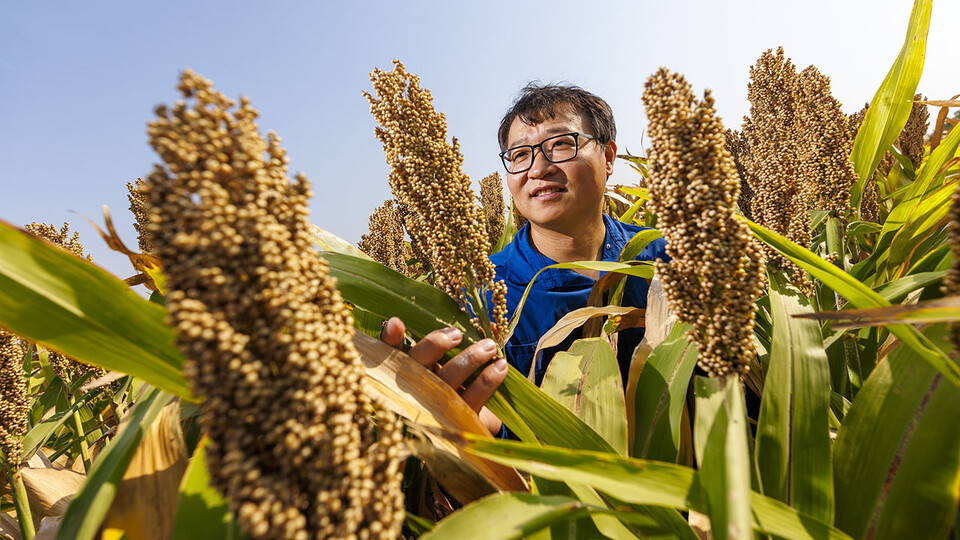Husker research hones in on sorghum’s genetic makeup to improve nitrogen efficiency

September 19th, 2022
A University of Nebraska–Lincoln scientist is leading a multi-institutional effort to better understand sorghum’s genetic makeup in a quest to improve the crop’s nitrogen use efficiency.
Jinliang Yang, assistant professor of agronomy and horticulture, leads a three-year, $2.7 million project that includes other Husker scientists as well as collaborators at Kansas State University and the Alabama-based HudsonAlpha Institute for Biotechnology. The multidisciplinary project is funded by a grant from the U.S. Department of Energy.
Increases in the price of nitrogen fertilizer and the environmental impact of fertilizer runoff on ecosystems have driven extensive research into increasing sorghum’s fertilizer use efficiency. That research, at Nebraska and other institutions, has helped scientists answer questions around nitrogen’s assimilation, transport, and reallocation processes. Studies have identified specialized nitrate transporters and sensors, helping scientists characterize the nitrogen mobilization process, all with an eye toward helping the crop use nitrogen as efficiently as possible and reducing fertilizer use. One-third of the sorghum grown in the U.S. is used for livestock feed, and it’s also a popular food crop in areas of Asia and Africa.
...
Yang’s Nebraska collaborators include Thomas Clemente, Eugene W. Price Distinguished Professor of biotechnology; Yufeng Ge, Harold W. Eberhard Distinguished Professor of biological systems engineering; and James Schnable, Charles O. Gardner Professor of Agronomy.
For full news story click HERE
Story by Dan Moser | Research and Economic Development
